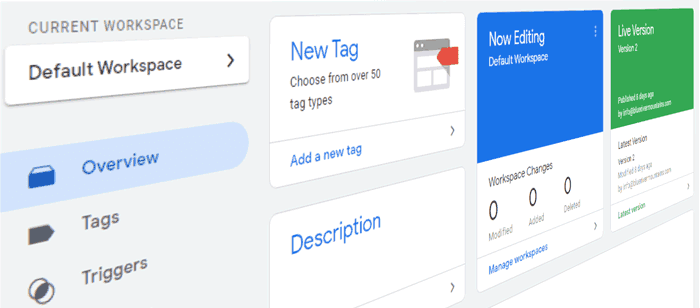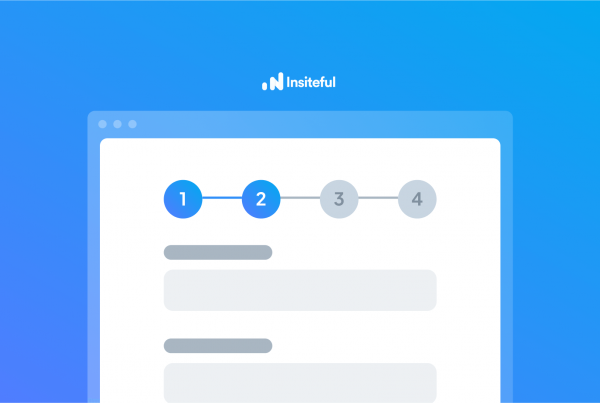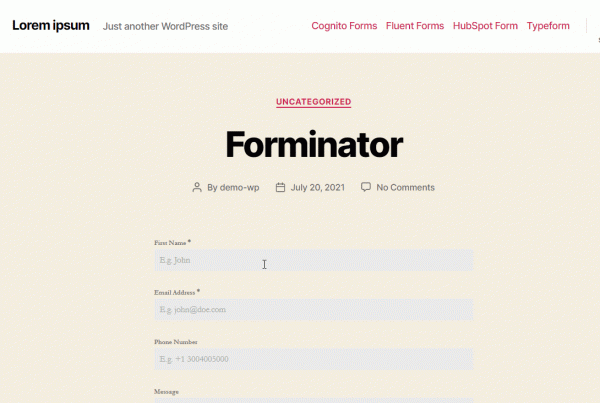Why you shouldn’t use Google Tag Manager (GTM) to track your forms
Google Analytics is one of the oldest and most popular analytics solutions on the web. By extension, Google Tag Manager (GTM) is a commonly-used solution for managing all your script tags for analytics, conversion tracking, remarketing pixels, etc. According to W3Techs, Google Analytics is the chosen traffic analytics tool of 86.3% of websites, found on 56.6% of all existing websites!
However, Google Analytics is meant for tracking user behavior between pages — not what goes on within each page! In fact, if you’re only using GA to track your website, you may be entire unaware of potential leads that you’re missing out on.
While Google Analytics and Tag Manager (GTM) are great tools to set up and manage the basics for digital marketing, savvy marketers should choose a more specialized solution for tracking lead forms — or any other in-page behavior for that matter.
There are a handful of reasons as to why you should not track your forms with GTM, but they can mostly be simplified to one core issue:
GTM and Google Analytics cannot capture 100% of website visitors and form entries. This entirely defeats the purpose of tracking your forms, considering you’re still losing potential leads and missing incomplete form entries afterwards.
We’ll explore a few of the reasons behind these limitations of GTM, and how you should track your forms instead:
1. One in 3 users have ad blockers
Various studies have discovered that today, more than 30% of Internet users make use of an ad blocking extension. AdBlock, the most popular blocking extension, is reported to have more than 65 million users. The problem is that ad blockers often also block GTM, meaning your Google Tag Manager scripts don’t run all the time, and therefore fail to capture 100% of visitors.
This means you may still be losing abandoned forms and partial entries if you track your forms with GTM! You can easily avoid this by choosing a purpose-built form abandonment tracking solution, such as Insiteful.co (which can be installed without using GTM).
2. Not compatible with all forms
There are a handful of custom-coded form abandonment tracking scripts for Google Tag Manager floating around on the internet, but they all share one common issue when you check the comments: tracking form abandonment with GTM cannot track various types of forms, such as….
- multi-page forms
- forms that appear after page load
- forms that load in iFrames (ie. Typeform, HubSpot)
- standalone inputs (with no <form> element)
- forms created with platforms like Adobe Experience Manager
Insiteful is the first-ever universal form abandonment tracking script, which you can plug-n-play to track all your existing forms in just a few clicks.
3. Mobile devices
Tracking form abandonment on mobile devices poses a unique challenge due to a key difference in browser behavior. Mobile devices & browsers do not support the JavaScript trigger for when a page is being closed (”beforeunload”) — without this, most form abandonment scripts are unable to function properly.
This is the reason that you’ll find that all the GTM form tracking scripts online include a caveat that mobile devices are not supported.
Given that over 60% of today’s internet traffic comes from mobile devices, this is a massive shortcoming when it comes to tracking forms with Google Tag Manager. Moreover, this means that any abandoned forms on mobile devices will be completely missed by GTM form tracking scripts.
Fortunately, Insiteful offers a quick & easy alternative to track form abandonment across all devices: both desktop and mobile.
4. Delays and page load time
Most developers agree that Google Tag Manager adds performance bottlenecks to the site. However, corporations continue to rely on GTM due to the ease it offers product managers like for adding/updating/removing marketing tools and other JavaScript plugins to the site. At the end of the day, any script placed on your site will impact the loading process — even if it’s loaded asynchronously; GTM is no exception to this.
For comparison, the Insiteful tracking code weighs in at <14kb and just 32.6 milliseconds of load time (according to Pingdom), and the minified JS file itself is only 48kb. The Insiteful form abandonment script is loaded by default with both the “async” and “defer” tags, so it should have an extremely minimal impact on load time.
5. Sampling
Google Analytics relies on “sampled reporting” — a common industry term for extrapolating metrics from recording only a percentage of the total website visitors. On average, websites using Google Analytics see as low as 8 – 10% sampling: meaning Google Analytics completely disregards 90 – 92% of your web traffic.
This is alright for a general “guesstimate” of user behavior, but there are clear drawbacks to failing to measure over 90% of users. If you want to get around this and receive unsampled reporting, get ready to pay up: Google Analytics 360 (the full-featured, premium version) costs roughly $150,000 annually in licensing.
6. Coding and set up
Tracking form abandonment with GTM requires development expertise, or at least a decent knowledge of JavaScript, HTML, and Google Tag Manager. If you’re not a coder or don’t have experience with web development, setting up form tracking in Google Tag Manager can be incredibly challenging &/or fairly expensive.
Instead, you can track your forms in a matter of seconds with Insiteful’s turnkey form abandonment solution: all you have to do is copy & paste our tracking script — no coding knowledge required!
How to track form abandonment: use the right tools
We’re obviously slightly biased here, but we find that Insiteful is the easiest and most effective way to track form abandonment.
Insiteful is universally-compatible with virtually any type of form — you can even install it with GTM! You can automatically track & optimize your forms in just two clicks.
Want to start closing more deals online? Get started with Insiteful to seal the leaks in your online lead forms today. What are you waiting for?




